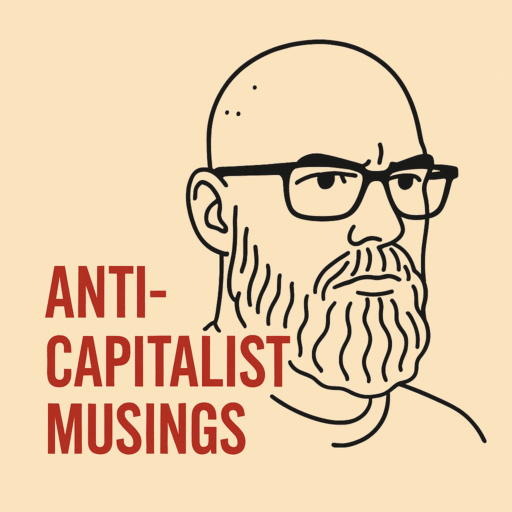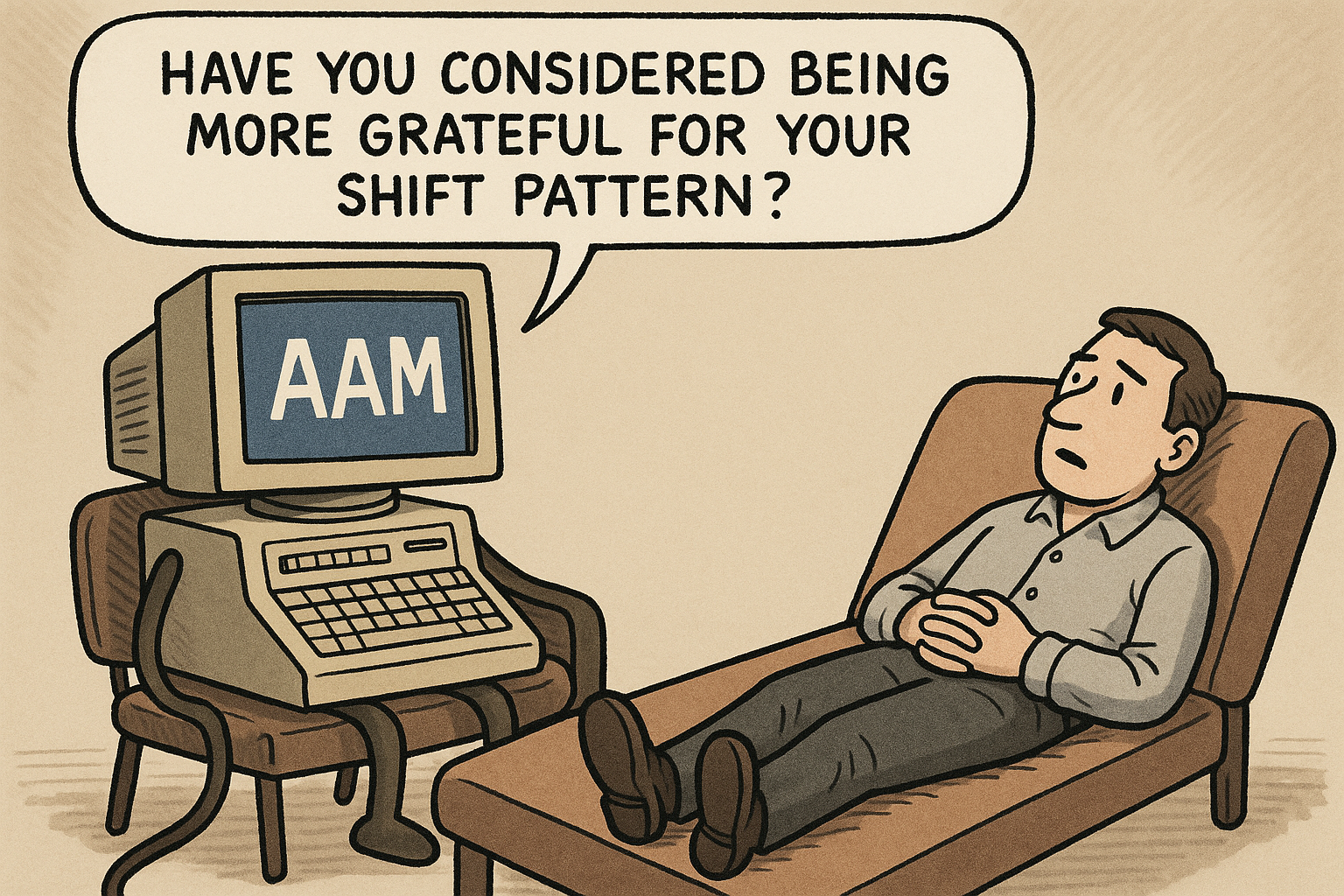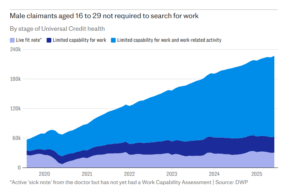When PwC unveiled its new “traffic light system” for office attendance, it seemed like a gimmick. A dashboard for managers, linked to pass swipes and WiFi log-ins, showing staff as green if they were in the office enough, amber if they dipped below a 60 per cent threshold, red if below 40. It was presented as an updated means of “punching the clock.” One colour for compliance, another for wavering, and another for non-compliance. Simple enough.
But what looks like a minor HR innovation is in fact part of a broader pattern: the steady expansion of bossware Technologies of workplace surveillance and control. The traffic light system is a reminder that in the City of London, labour discipline never really goes out of style. The idea of codifying presence through colour is both crude and symbolic: crude in that it reduces attendance to a binary signal, symbolic in that it makes visible the hierarchy of trust. Green is loyalty, amber is doubt, red is danger. The implicit threat is always behind the colours: sanctions, lost bonuses, missed promotions.
The Long History of Surveillance at Work
To understand why PwC’s dashboard matters, you have to see it in context. Workplaces have always been sites of measurement. The factory bell synchronised bodies to the rhythm of machines. The time clock, first introduced in the late 19th century, recorded arrival and departure with mechanical precision, turning “time served” into a ledger entry. Frederick Winslow Taylor’s scientific management broke tasks into micro-motions, measured with stopwatches, and prescribed the “one best way” to move.
In the 20th century, supervisors and foremen were the living instruments of surveillance, their gaze reinforced by CCTV as offices modernised. Cubicles were designed as open cells, maximising visibility while maintaining the fiction of privacy. By the 1980s, electronic monitoring systems in call centres were timing conversations to the second. By the 2000s, keystroke loggers and screen monitors spread with the digitisation of office work. Each generation of technology has done the same thing: render workers more legible to management.
Seen in this lineage, PwC’s traffic light system is not a novelty but an update of an old logic. The colours are digital gloss on the same managerial distrust that once rang through factory bells and ticked on punch clocks.
From Blunt Instruments to Fine Scalpels
PwC is not alone. HSBC is installing four times as many cameras in its new building and doubling the number of biometric readers to enter trading floors. Officially this is to deter theft, but the subtext is obvious. Banks are seizing on the backlash against home-working and the moment of weaker worker bargaining power to tighten surveillance. Biometric readers and cameras do more than secure buildings: they remind staff that their every movement is visible, recorded, accountable.
This is the blunt end of the trend. Cameras, pass swipes, WiFi log-ins: they capture presence in the simplest sense. They answer the question: “Are you there?” But the logic of surveillance rarely stops there. Once a technology proves effective at producing discipline, it is only a matter of time before the scope expands.
At the other pole sits what the Observer piece flagged as the new frontier: Algorithmic Affect Management (AAM). Where pass swipes and cameras can only verify that you are in the building, AAM promises to verify how you are in the building. Are you alert, engaged, happy, collaborative? Or are you tired, angry, distracted? By analysing facial expressions, the pace of typing, the gait of a walk, even the small tremors in handwriting, AAM seeks to measure what was once unmeasurable, our moods, affects, and dispositions.
Thus, blunt instruments and fine scalpels form a continuum: the traffic light tells managers who is present; AAM tells them whether the present worker is the right kind of present.
The Dialectic of Discipline
Marx’s account of labour-power remains instructive here. What capital buys in the employment contract is not just hours but the “aggregate of mental and physical capabilities” that a worker can set in motion. Historically, the problem for managers has been how to maximise the use of those capabilities. The factory clock ensured punctuality; the time-and-motion study squeezed efficiency; CCTV ensured obedience. Each device was a solution to the same problem: making labour-power more legible, predictable, exploitable.
What we see today is an extension of this logic. The traffic light system captures the external dimension of labour-power. Our physical presence in the office. AAM extends this into the internal dimension. Our emotional state, and psychological compliance. The worker is made visible from the outside and from the inside. Together, these techniques aim at total surveillance: nothing left unmeasured, nothing outside managerial oversight.
Surveillance as Theatre
The important point is that these systems are not just neutral tools; they are theatrical. They perform power as much as they record data. Workers are meant to know that their attendance is being colour-coded, that their faces might be read, that their keystrokes could betray distraction. The effect is anticipatory: workers discipline themselves, adjust behaviour, smile when they do not feel like smiling, appear busy even when the task is complete.
Foucault called this the internalisation of the gaze: a situation in which the possibility of being watched is enough to produce conformity. PwC’s dashboard is not merely a monitoring tool but a stage on which workers must constantly act out compliance. HSBC’s cameras are not just security devices but props in a disciplinary theatre. AAM takes the performance further, insisting that even inner moods must be presented in ways legible to the algorithm.
Pseudoscience with Teeth
Yet, AAM is also pseudoscience. Affect resists capture. A furrowed brow can mean deep concentration or mild irritation; a pause in typing can mean thoughtfulness or hesitation. The same gesture carries different meanings depending on context, culture, personality. No algorithm can collapse this into a stable score without distortion.
But accuracy is not the point. Managers do not need to know exactly what a frown means; they need only a dashboard that tells them which workers to watch, who to reward, who to discipline. If the system misreads, so be it. The misread itself produces compliance, as workers attempt to conform to what they believe the system expects. In this way, AAM resembles astrology: dubious in its claims, yet powerful in its effects, because those in authority act as if it were true. It is fortune-telling with disciplinary consequences.
The City as Vanguard
It matters that these experiments are happening in finance. The City has always been a laboratory for managerial control, not because bankers are uniquely untrustworthy but because finance capital sits at the frontier of new technologies of power. Open-plan offices, electronic monitoring, performance-linked pay. All were perfected in finance before being exported to other sectors.
What starts as PwC’s traffic light system or HSBC’s camera upgrade will not stay confined to the glass towers of Canary Wharf. Schools, hospitals, warehouses, and public offices will follow. “Bossware” trickles down, normalising ever more invasive regimes of surveillance under the banner of productivity.
The Contradictions of Affect
The more capital seeks to measure, the more it reveals its ignorance. Affect cannot be captured in numbers without destroying what it is. The translation of smiles, frowns, pauses, and gestures into data flattens human experience into caricature. Workers will be fired for misread moods, disciplined for algorithmic errors. But the deeper contradiction is this: by attempting to colonise even the inner weather of our moods, capital sharpens alienation. Workers see not only their time but their affects being expropriated. Resistance emerges not only in strikes or walkouts but in the refusal to be read—in cultivating blankness, opacity, irony.
The Right to Opacity
Here, Édouard Glissant’s notion of a “right to opacity” becomes not just poetic but practical. Opacity is the refusal to be fully known, the insistence that life cannot be collapsed into transparency. In the colonial context, opacity was resistance to domination; in the workplace today, it can be resistance to bossware.
Opacity is not hiding in the shadows. It is the practice of ambiguity, of refusing to translate oneself into the metrics demanded by capital. For workers, this might mean performing neutrality. With faces too bland to register as smiles or frowns. It might mean ironic over-performance: exaggerated cheerfulness that makes the algorithm useless. It might mean developing collective practices of camouflage, small disruptions that generate noise in the data.
Opacity can also be political. A demand for opacity is a demand for the right not to have one’s affect commodified. Just as earlier generations of workers fought for limits on working hours or protections against intrusive medical tests, so too might this generation fight for the right not to have their moods and gestures converted into managerial data. The slogan could be simple: our smiles are not for sale.
Class Forces and the Backlash Against WFH
There is a reason why these systems are being rolled out now. The balance of class forces has shifted since the pandemic. During Covid, workers briefly enjoyed leverage: employers needed them to keep things moving, home-working proved effective, labour shortages gave bargaining power. But as the crisis faded, firms seized the moment to reassert control. The backlash against working from home (framed as a matter of “productivity” or “team culture”) was in fact a push to restore managerial oversight.
Traffic lights and biometrics are not neutral tools; they are weapons in that struggle. They work by exploiting the weakness of organised labour. In the absence of strong unions or collective bargaining, firms can impose surveillance regimes unilaterally. The PwC system would have been harder to imagine in the 1970s, when shop-floor militancy could still threaten profits. In today’s City, with fragmented workplaces and atomised staff, it is rolled out with barely a murmur.
That is the real lesson of the Observer piece. Surveillance technologies are never simply technical innovations. They are the expression of class power at particular moments in history. The factory clock belonged to the age of industrial militancy; the cubicle to the era of bureaucratic growth; keystroke loggers to the age of digital outsourcing. Traffic lights and AAM belong to a moment of weakened worker leverage, managerial overconfidence, and the recomposition of work after Covid.
Conclusion:
The Observer article gives us a snapshot of the new bossware regime. PwC’s traffic light system and HSBC’s biometric upgrades are the blunt instruments; Algorithmic Affect Management is the fine scalpel. Together, they form a continuum of control, extending from attendance to affect, from presence to mood.
The genealogy is clear: the factory bell, the punch clock, Taylorism, CCTV, cubicles, keystroke loggers. Each a step in capital’s attempt to render workers more legible. Now the traffic light system and AAM extend that logic to its limit. The future of work in the City, and, inevitably, beyond it, is not just being watched, but being read. Workers are not only expected to be present, but to be present in the right way, to perform the right moods, to glow the right colour on a dashboard.
The only counterweight is resistance. That begins with the recognition that affect is not a commodity, and that opacity (the refusal to be fully legible) can be a political right. Without it, every sigh, pause, and gesture becomes part of the profit system. With it, workers can reclaim what capital cannot measure: the dignity of being unreadable, and the power to decide when and how to be seen.





